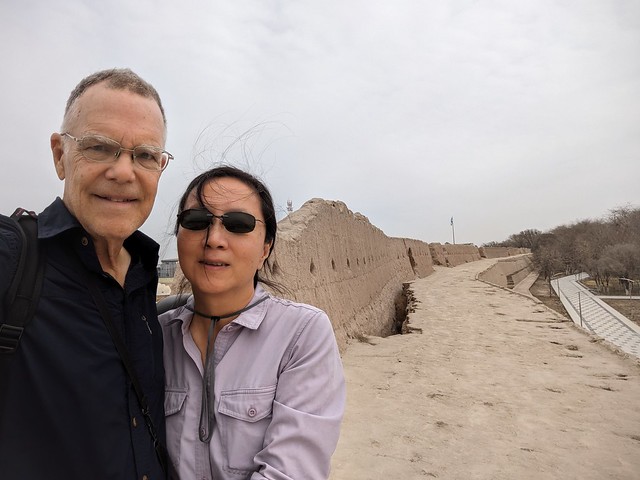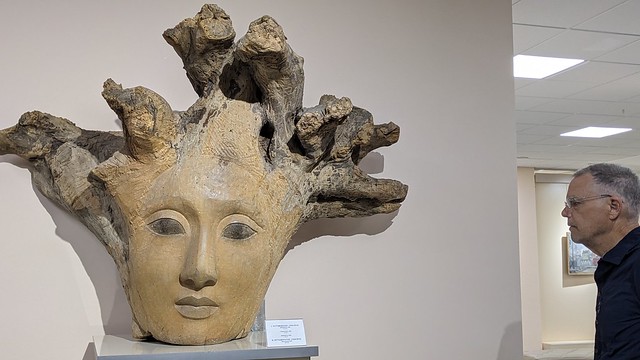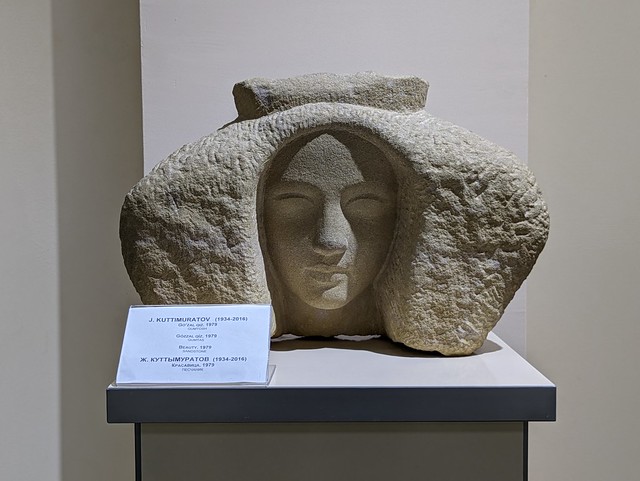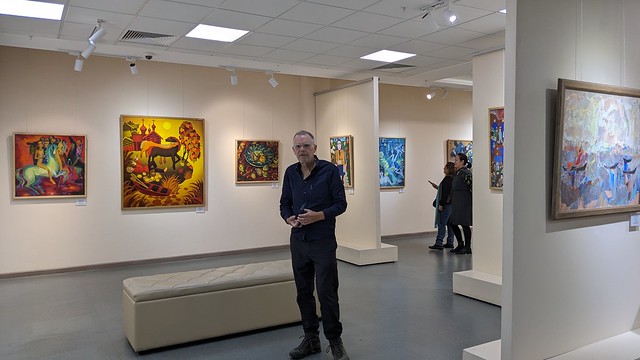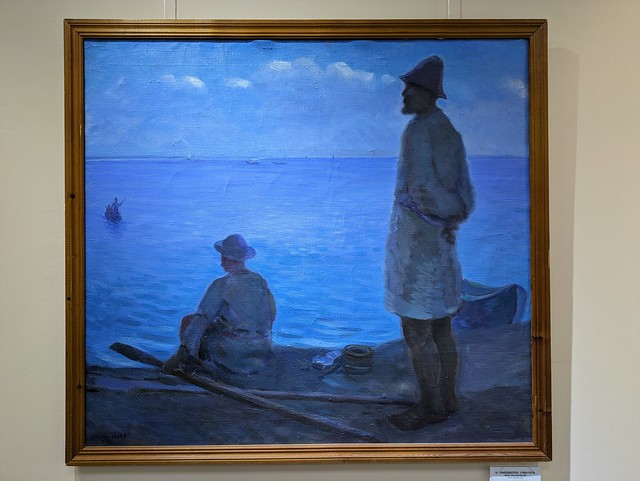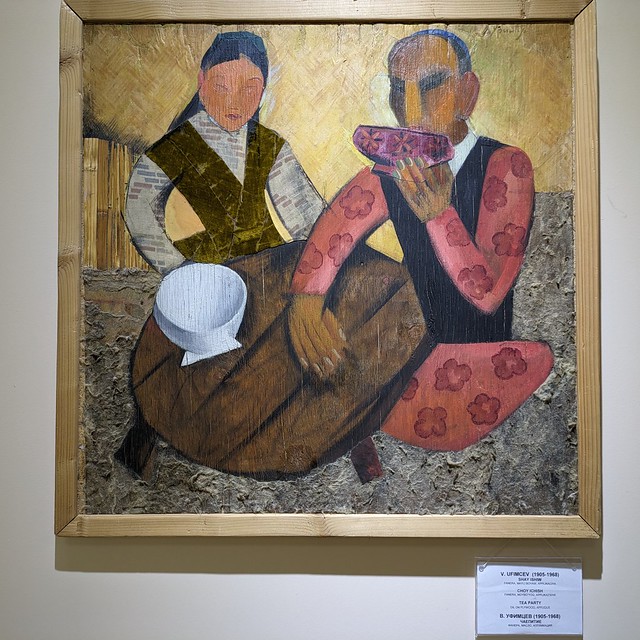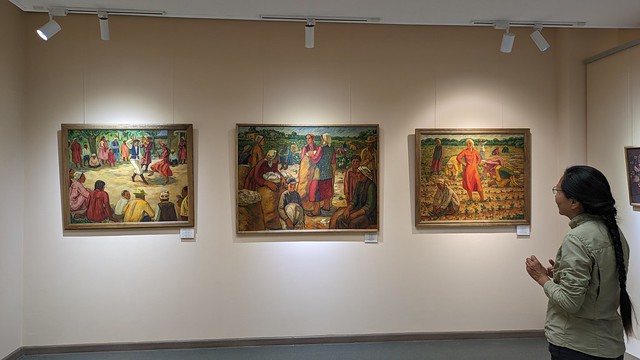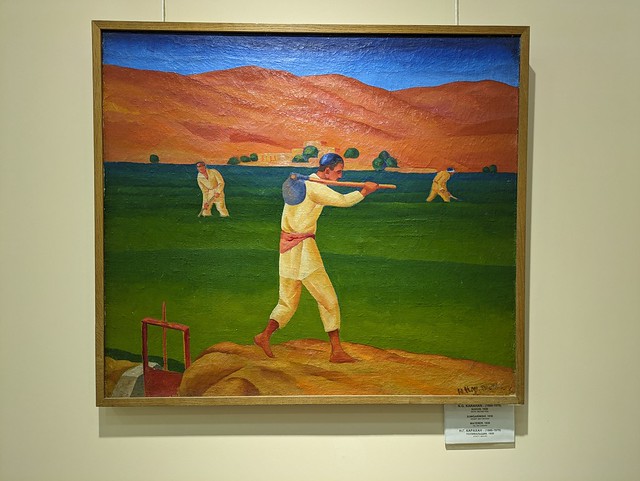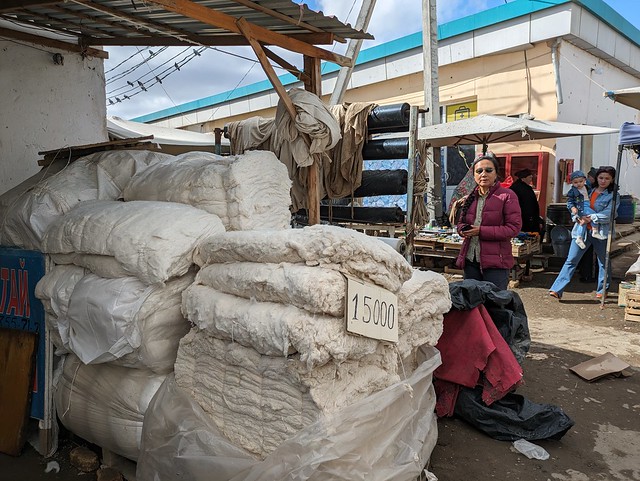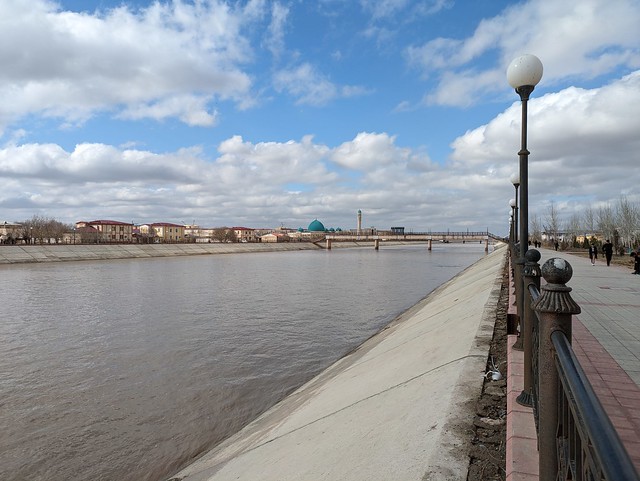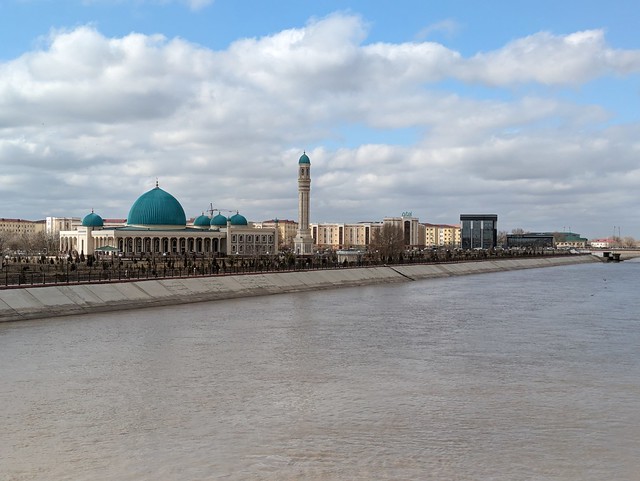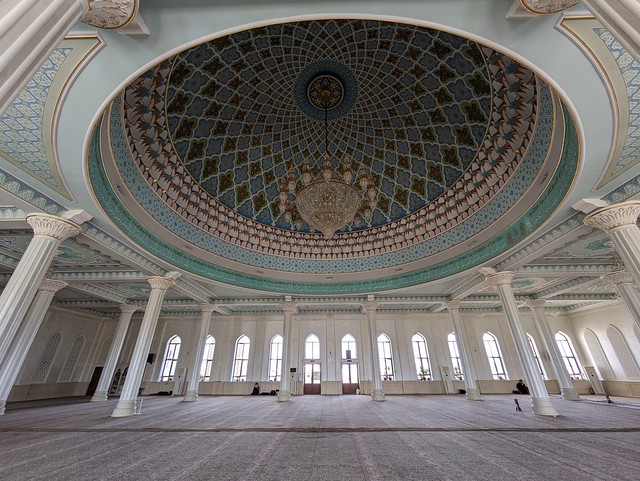Walking around Khiva is like being on a movie set, it is exactly like what one might imagine what a Silk Road post would look like. The core of the inner city consists of palaces, mosques, madrassas, and mausoleums, surrounded by the inner city wall (~3km). There is one marketplace (tim) and one bath (hammam). I imagine most plebeian activities would have taken place between the inner and outer wall, however nothing survived there, save for part of the outer wall.
Just inside the Northern Gate, a former madrasah is now an upscale hotel. Its unfinished Kalta Minor Minaret is more than amazing.
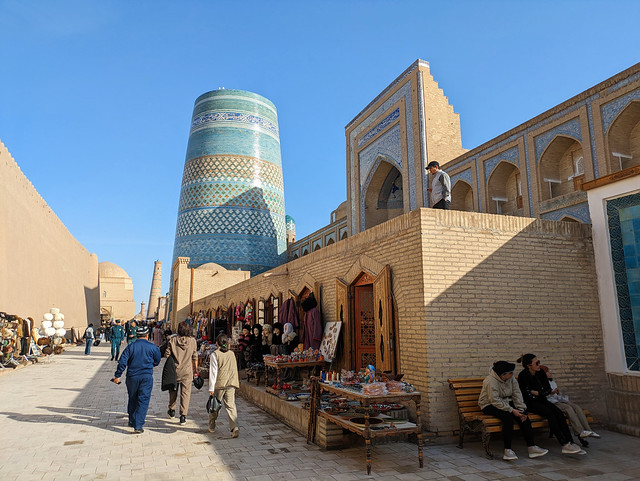


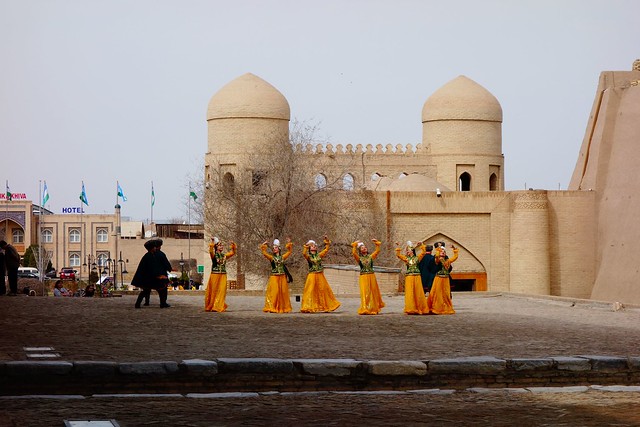
The main street.
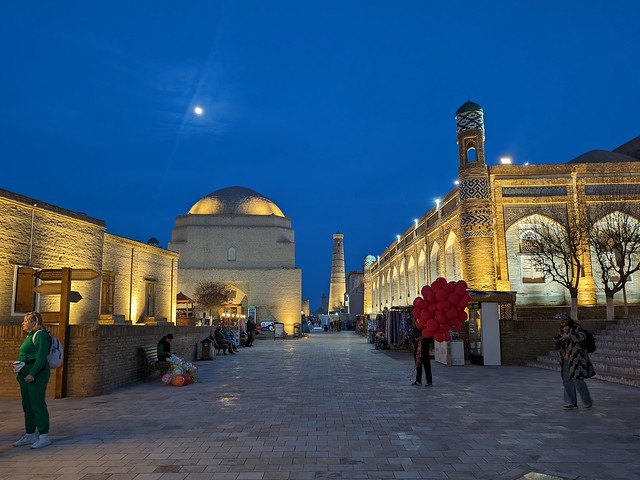 voice
voice
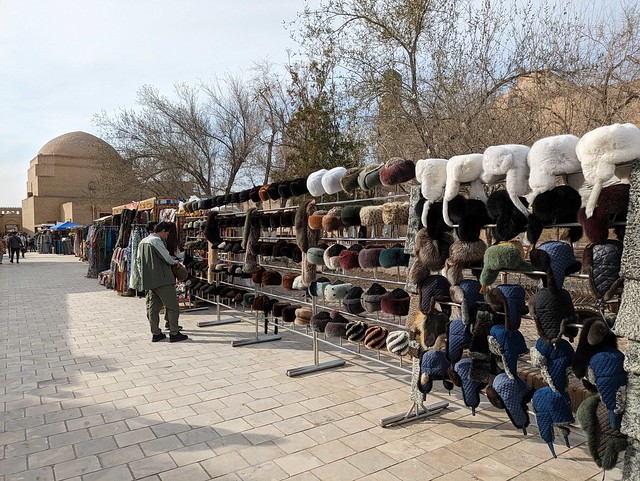

A glimpse inside the old mosque.

People live inside the old city, concentrated around the so-called White Mosque and the Southern Gate.



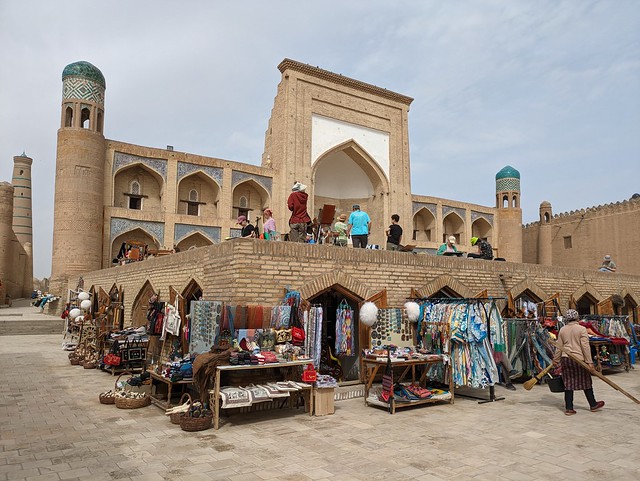

The main square.
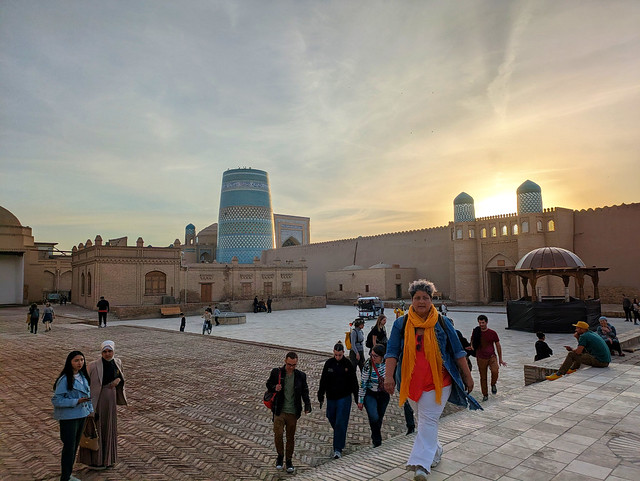

Mausolum and tombs.

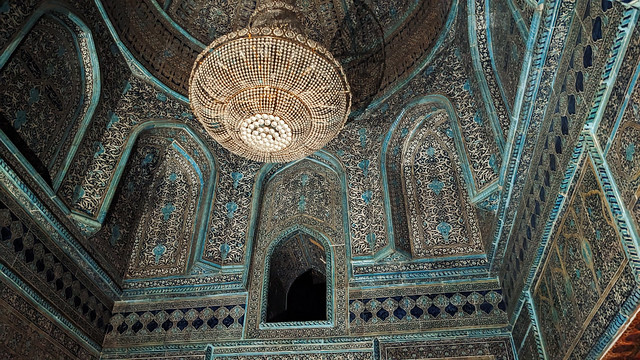

The 57-meter tall Islom Hoja Minaret.
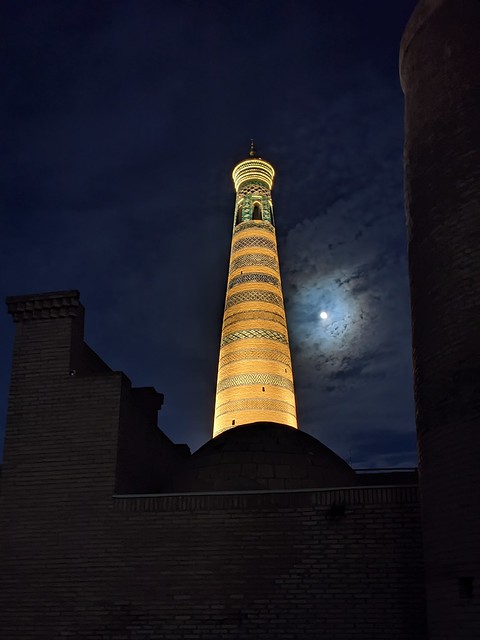

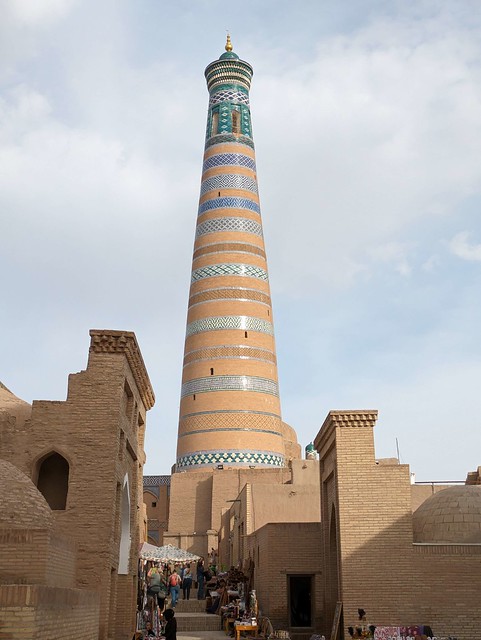
The market in front of the former Russian school.

Inner City Wall. Some portions of the inner wall contain tombs. Some parts are indergoing repairs. Our hotel had a city wall view.



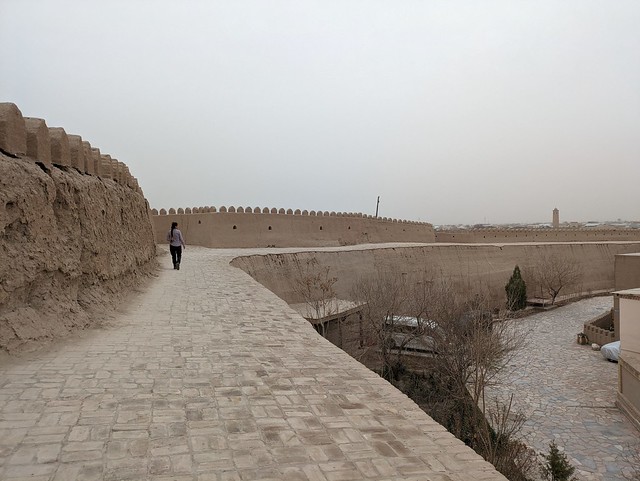
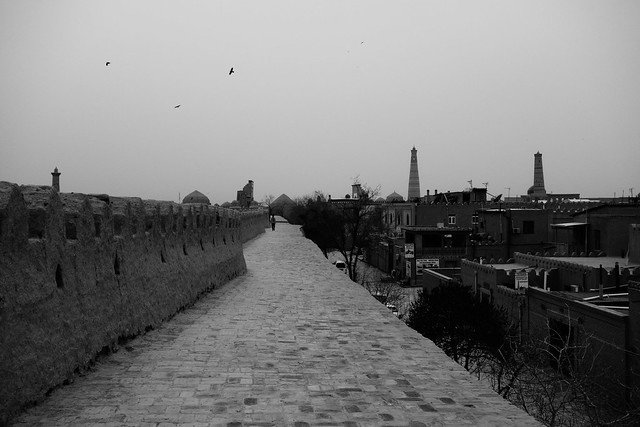
Outer City Wall.


